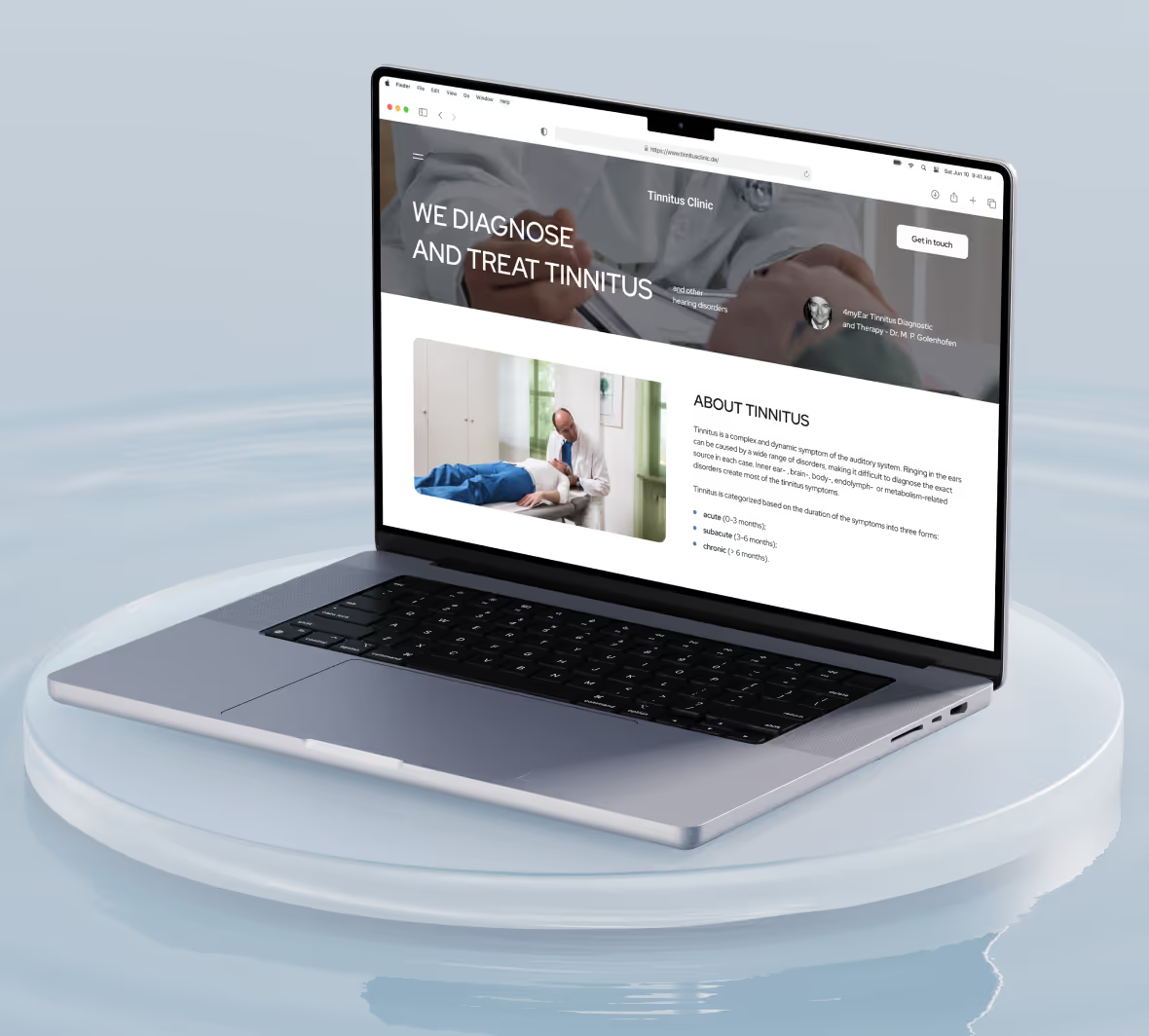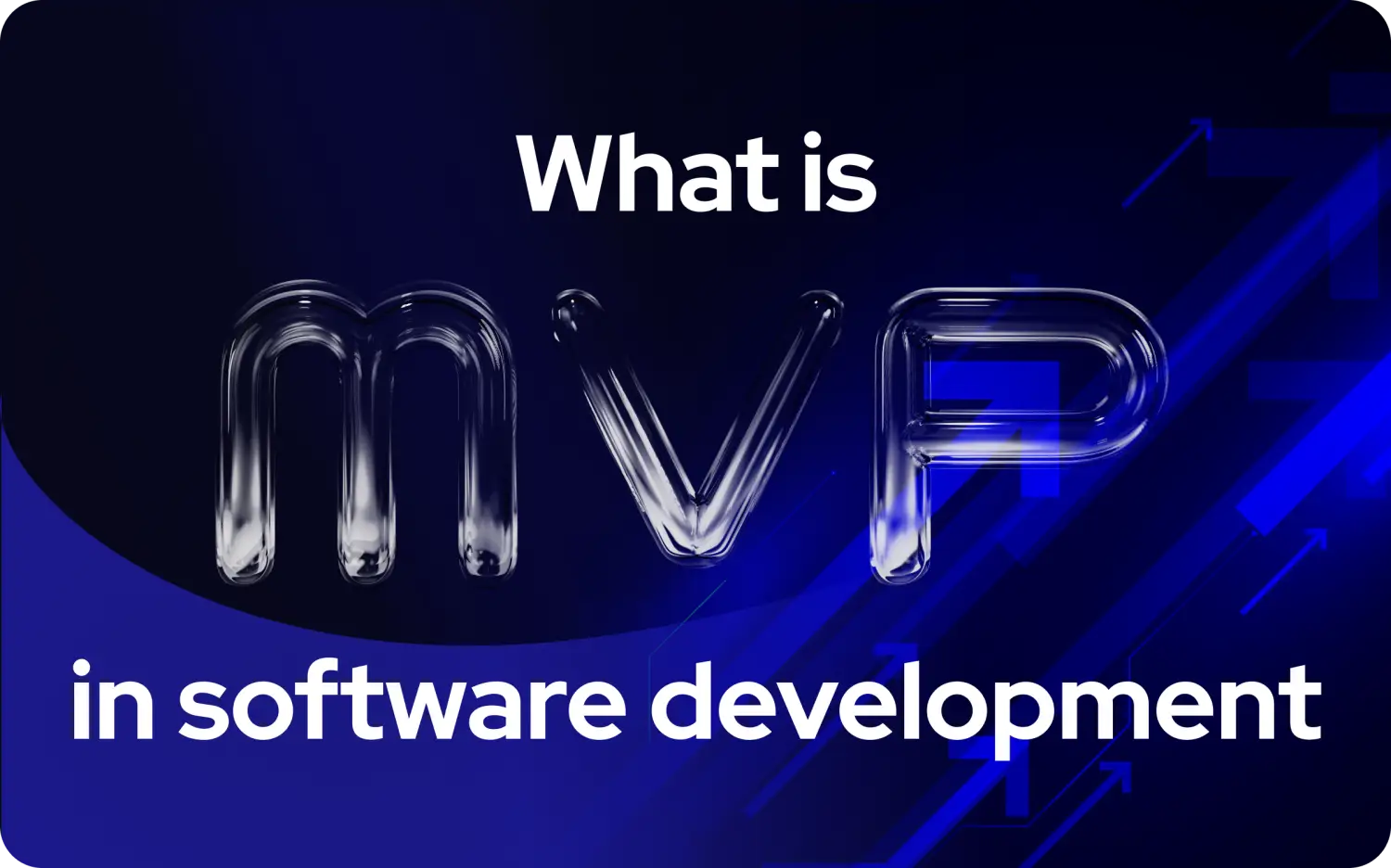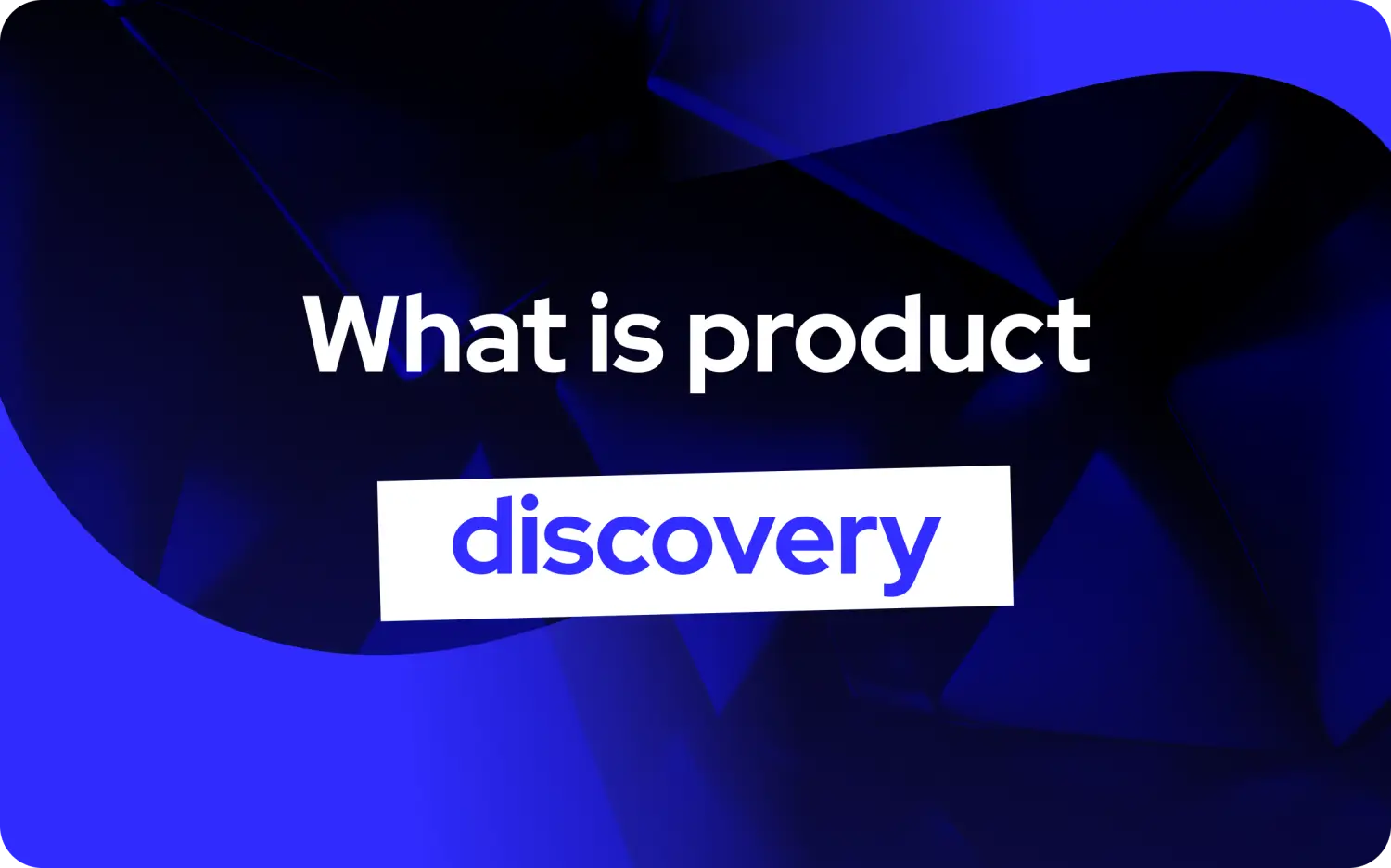
Heb je ooit stress gehad bij het lanceren van een nieuw product? Je bent niet alleen. Veel ondernemers streven naar perfectie voordat ze het product uitbrengen, maar haast om een Minimum Viable Product (MVP) te ontwikkelen en het voor de neus van gebruikers te krijgen, kan leiden tot betere resultaten. Het MVP ontwikkelingsproces brengt waardevolle inzichten over je klanten en hun behoeften aan het licht om je te helpen het juiste product te maken. Het goede nieuws is dat je het niet alleen hoeft te doen. Met de opkomst van no-code MVP platforms is het bouwen van een functionele MVP toegankelijker geworden, zodat je je kunt richten op het snel testen van ideeën zonder uitgebreide kennis van codering. Deze gids geeft een overzicht van het MVP ontwikkelingsproces en biedt nuttige stappen om je MVP te bouwen.
Voor wie liever niet zelf aan de slag gaat, is Minimum Code een no-code ontwikkelingsbureau dat je kan helpen om snel een gebruiksvriendelijke MVP te maken die aan je doelen voldoet.
Wat is MVP ontwikkeling?

MVP ontwikkeling richt zich op het maken van een Minimum Viable Product om zakelijke hypotheses te testen met echte gebruikers. Door een MVP uit te brengen aan early adopters kunnen start-ups feedback verzamelen over de kenmerken en functionaliteiten van het product om weloverwogen beslissingen te nemen over de toekomstige ontwikkeling. Deze aanpak vermindert de risico's van het bouwen van een product dat de markt mist of niet voldoet aan de behoeften van de doelgroep.
Het MVP ontwikkelingsproces
.jpeg)
Het MVP ontwikkelingsproces omvat een gestructureerde aanpak voor het bouwen van een Minimum Viable Product, waardoor start-ups en productteams hun ideeën doeltreffend kunnen valideren. Dit proces omvat meestal verschillende belangrijke fasen, die ervoor zorgen dat teams van concept naar lancering kunnen gaan terwijl de risico's en kosten tot een minimum worden beperkt.
Ideeënvorming en marktonderzoek: De eerste stap van het MVP ontwikkelingsproces
De eerste stap in het MVP ontwikkelingsproces bestaat uit het brainstormen over ideeën en het uitvoeren van grondig marktonderzoek. Dit onderzoek is super belangrijk om te begrijpen wat gebruikers willen, om te zien wat er nog ontbreekt in de markt en om het basisidee van het product te checken. Teams gebruiken vaak enquêtes, interviews en analyses van concurrenten om informatie te verzamelen over potentiële gebruikers en bestaande oplossingen.
Voorbeeld
Via marktonderzoek kan een start-up ontdekken dat gebruikers ontevreden zijn over bestaande tools voor taakbeheer vanwege hun complexiteit. Dit inzicht zou kunnen inspireren tot een nieuwe, eenvoudigere MVP die zich richt op essentiële functies voor taakbeheer.
Kernfuncties definiëren: Je focus scherpstellen voor een succesvolle MVP
Zodra het eerste idee is gevalideerd, is de volgende stap het definiëren van de essentiële kenmerken van het MVP. Hierbij wordt prioriteit gegeven aan functionaliteiten die direct inspelen op gebruikersbehoeften en waarde bieden. Het doel is om het product terug te brengen tot zijn basisvorm en toch voldoende bruikbaarheid te bieden om early adopters aan te trekken.
Voorbeeld
Een MVP van een fitness app kan zich alleen richten op het bijhouden van activiteiten en gebruikersprofielen, waarbij geavanceerde functies zoals sociaal delen en gepersonaliseerde trainingsplannen worden weggelaten voor toekomstige iteraties.
Een prototype maken: Je MVP visualiseren vóór de ontwikkeling
In deze fase maken teams een prototype van het MVP, variërend van een eenvoudige papieren mock-up tot een volledig interactieve digitale versie. Prototyping stelt teams in staat om het product te visualiseren en de bruikbaarheid ervan te testen voordat ze tijd en resources investeren in de ontwikkeling. Feedback van gebruikers op het prototype kan onschatbare inzichten opleveren voor het verfijnen van het product.
Voorbeeld
Een team kan een aanklikbaar wireframe van hun MVP ontwikkelen om feedback te verzamelen over de gebruikersstroom en het ontwerp, voordat ze beginnen met de daadwerkelijke ontwikkeling.
Ontwikkeling: Je MVP bouwen met behulp van agile methodologieën
Zodra het prototype is verfijnd, begint de ontwikkelingsfase. Teams gebruiken agile methodologieën om de MVP te bouwen, waarbij de focus ligt op het leveren van werkende software in iteratieve cycli. Deze aanpak zorgt voor flexibiliteit en aanpassingsvermogen, zodat teams tijdens de ontwikkeling kunnen reageren op feedback en de nodige aanpassingen kunnen doen.
Voorbeeld
Bij een agile aanpak kan een softwareontwikkelingsteam een basisversie van hun MVP uitbrengen met kritieke functies, zodat ze feedback van gebruikers kunnen verzamelen en wijzigingen kunnen doorvoeren in volgende sprints.
Testen en het garanderen van kwaliteit: Ervoor zorgen dat je MVP werkt zoals bedoeld
Grondig testen zorgt ervoor dat het product werkt zoals bedoeld voordat de MVP wordt gelanceerd. Deze fase kan unit tests, acceptatietests (UAT) en bruikbaarheidstests omvatten. Het identificeren en aanpakken van problemen tijdens deze fase helpt de gebruikerservaring te verbeteren en vertrouwen op te bouwen in de kwaliteit van het product.
Voorbeeld
Een webapplicatie kan verschillende testfasen ondergaan, waaronder functionele tests om te controleren of alle functies correct werken en bruikbaarheidstests om te observeren hoe echte gebruikers met de app omgaan.
Lancering: Je MVP aan echte gebruikers laten zien
Na succesvol testen is de MVP klaar voor lancering. Deze eerste release moet gericht zijn op een specifieke doelgroep, zodat teams zich goed kunnen focussen op hun marketing. Early adopters zijn van cruciaal belang voor het geven van feedback die toekomstige product iteraties van informatie voorziet.
Voorbeeld
Een start-up kan zijn MVP lanceren aan een selecte groep bètatesters en hen stimuleren om feedback te geven en hun ervaringen met het product te delen.
Feedback verzamelen en iteratie: Je MVP verbeteren na de lancering
Na de lancering verschuift het MVP ontwikkelingsproces naar het verzamelen van feedback van gebruikers en het analyseren van gebruiksgegevens. Deze feedback is super belangrijk om te begrijpen hoe mensen met het product omgaan en wat er beter kan. Teams kunnen nieuwe functies en verbeteringen prioriteren op basis van echte gebruikersinzichten.
Voorbeeld
Na de lancering kan een team merken dat gebruikers vaak om een bepaalde functie vragen, waardoor ze prioriteit geven aan de ontwikkeling ervan in de volgende iteratie.
Opschalen en toekomstige ontwikkeling: Je MVP voorbereiden op groei
Als het product volwassen wordt en aanslaat, kunnen teams zich richten op het schalen van het product, het toevoegen van nieuwe functies en het uitbreiden naar een breder publiek. Deze fase omvat voortdurende verbetering en aanpassing om te voldoen aan veranderende behoeften van de gebruiker en de markt.
Voorbeeld
Zodra de MVP succesvol blijkt, kan een fitness app geavanceerde analyses, sociale functies en gepersonaliseerde aanbevelingen integreren om de betrokkenheid en retentie van gebruikers te verbeteren.
Door het MVP ontwikkelingsproces te begrijpen en te volgen, kunnen start-ups doeltreffend door de complexiteit van productontwikkeling navigeren terwijl ze de risico's minimaliseren en hun kansen op succes op de markt maximaliseren. Deze gestructureerde aanpak helpt ideeën te valideren en bevordert een cultuur van aanpassingsvermogen en voortdurende verbetering.
Met Minimum Code kun je eindelijk je al lang gekoesterde zakelijke idee snel en zonder al te hoge kosten realiseren. Breng je lang gekoesterde zakelijke ideeën tot leven met ons! Vraag vandaag nog een gratis productonderzoek en scoping aan voor je app idee!
Het belang van MVP ontwikkeling in de huidige markt

Risico's verminderen: Houd je start-up draaiende
Het bouwen van een product met een complete set functies vergt een aanzienlijke investering in tijd en resources, wat een ramp kan betekenen voor een start-up met een beperkt budget. Het MVP ontwikkelingsproces stelt teams in staat om hun belangrijkste productideeën met minimale risico's te testen. Als de MVP niet aanslaat bij de gebruikers, blijven de kosten binnen de perken, waardoor aanpassingen of het bijsturen mogelijk zijn zonder ernstige financiële gevolgen.
Snellere tijd tot marktintroductie: Zorg dat je eerst bent
In concurrerende industrieën is snelheid essentieel. Het MVP ontwikkelingsproces stelt teams in staat om hun producten snel te lanceren, waardoor ze een voorsprong hebben op concurrenten. Door prioriteit te geven aan essentiële functies kunnen start-ups hun MVP sneller uitbrengen en sneller waardevolle feedback van gebruikers krijgen. Dankzij deze flexibiliteit kunnen ze hun aanbod aanpassen aan de marktbehoeften.
Klantgerichte aanpak: Bouw wat je gebruikers willen
Het MVP ontwikkelingsproces legt de nadruk op feedback van gebruikers en zorgt ervoor dat producten worden gemaakt met de doelgroep in gedachten. Door potentiële gebruikers in een vroeg stadium te betrekken en voortdurend feedback te verzamelen, kunnen teams hun aanbod afstemmen op de behoeften en voorkeuren van gebruikers. Deze klantgerichte benadering helpt bij het creëren van een product dat echt voldoet aan marktbehoeften.
Doeltreffend gebruik van resources: Haal het meeste uit je investering
Start-ups hebben vaak meer resources nodig, waaronder beperkte financiering en personeel. Met de MVP aanpak kunnen teams hun resources doeltreffender inzetten door zich te richten op de ontwikkeling van de meest kritieke functies. Deze strategische toewijzing minimaliseert verspilling en maximaliseert de impact van elke uitgegeven dollar.
Beslissingen op basis van data: Laat de cijfers spreken
De lancering van een MVP stelt teams in staat om gegevens te verzamelen over gebruikersinteracties en -voorkeuren. Deze info is superhandig om slimme beslissingen te nemen over productupdates, functieverbeteringen en marketingstrategieën. Door gebruikersgedrag te analyseren, kunnen start-ups hun aanbod verfijnen om hun publiek beter van dienst te zijn.
Een gebruikerscommunity opbouwen: Zorg voor je eerste fans
Een MVP lancering kan helpen bij het opbouwen van een community van early adopters die investeren in het succes van het product. Deze gebruikers geven vaak goede feedback en kunnen ambassadeurs voor het product worden, waardoor ze helpen het product bekend te maken en nieuwe gebruikers aan te trekken. Betrokkenheid bij deze community bevordert loyaliteit en kan leiden tot organische groei via mond-tot-mondreclame.
Investeerders aantrekken: Laat zien dat je het risico waard bent
Een goed uitgevoerd MVP toont de levensvatbaarheid van een bedrijfsidee en het potentieel voor succes. Start-ups die een functionele MVP met eerlijke gebruikersfeedback kunnen laten zien, zijn vaak aantrekkelijker voor investeerders. Dit tastbare bewijs van interesse vanuit de markt kan de kansen op het verkrijgen van financiering aanzienlijk vergroten.
Stichting voor toekomstige ontwikkeling: Bouw een beter product
De MVP dient als basis voor toekomstige productontwikkeling. Nadat het eerste concept is gevalideerd, kunnen teams verder bouwen op de MVP door nieuwe functies toe te voegen, de gebruikerservaring te verbeteren en de functionaliteit uit te breiden op basis van gebruikersinzichten. Deze iteratieve aanpak bevordert voortdurende verbetering en innovatie.
De 8 fasen van het MVP ontwikkelingsproces

1. Een winstgevend idee genereren en valideren
De eerste fase draait om brainstormen en het verfijnen van het initiële productidee. Ondernemers moeten zich richten op het identificeren van een echt probleem in de markt dat hun product zal oplossen. Het uitvoeren van marktonderzoek door middel van enquêtes, interviews en analyse van concurrenten helpt het idee te valideren en ervoor te zorgen dat er vraag naar is. Het doel is om de haalbaarheid van het productconcept te beoordelen en te bepalen in hoeverre het aanslaat bij de doelgebruikers.
2. Kernfuncties definiëren om prioriteit aan te geven
Zodra het idee is gevalideerd, is de volgende stap het definiëren van de belangrijkste functies in het MVP. In deze fase wordt prioriteit gegeven aan functionaliteiten die het geïdentificeerde probleem direct aanpakken en de meeste waarde bieden aan gebruikers. Het is essentieel om in dit stadium feature creep te vermijden - het toevoegen van onnodige features kan de lancering vertragen en de focus van het product afzwakken. Teams moeten frameworks zoals de MoSCoW-methode (Must have, Should have, Could have, Won't have) gebruiken om functies te categoriseren en te prioriteren.
3. Een prototype maken
In deze fase ontwikkelen teams een prototype of een wireframe van het MVP. Met deze visuele weergave kunnen belanghebbenden de lay-out en functionaliteit van het product zien voordat de ontwikkeling begint. Prototyping tools zoals Figma, Sketch of Adobe XD kunnen worden gebruikt om interactieve mock-ups te maken. Deze stap is essentieel voor het verzamelen van vroegtijdige feedback van potentiële gebruikers en het maken van noodzakelijke aanpassingen voordat wordt overgegaan tot volledige ontwikkeling.
4. Ontwikkel de MVP
Met een gevalideerd idee en een gedefinieerd prototype begint de eigenlijke ontwikkeling van de MVP. In deze fase wordt het product gecodeerd en gebouwd op basis van de eerder beschreven kernfuncties. Teams kunnen ervoor kiezen om Agile methodologieën te gebruiken om flexibiliteit en iteratieve vooruitgang te bevorderen. Continue integratie en testen tijdens deze fase zorgen ervoor dat het product werkt zoals bedoeld en maken snelle aanpassingen mogelijk op basis van testresultaten.
5. Testen en kwaliteit garanderen
Zodra de MVP is ontwikkeld, wordt hij grondig getest om bugs of problemen op te sporen en te verhelpen. Dit kwaliteitsgarantieproces zorgt ervoor dat het product een vlotte gebruikerservaring levert. Gebruikerstesten kunnen alfa- en bètatest fases omvatten, waarbij echte gebruikers interactie hebben met het product en feedback geven over bruikbaarheid en functionaliteit. Deze feedback is van vitaal belang om het product te verfijnen voor de lancering.
6. De MVP lanceren en op de markt brengen
Na grondig testen is de MVP klaar voor lancering. In deze fase wordt het product vrijgegeven aan het doelpubliek, vaak in combinatie met een marketingstrategie om bekendheid te creëren en gebruikers aan te trekken. Goede marketing kan dingen doen als sociale media gebruiken, contentmarketing, samenwerken met influencers en public relations om je zichtbaarheid te vergroten. Tijdens de lanceringsfase moet ook de betrokkenheid van gebruikers worden gemonitord en feedback worden verzameld om de prestaties van het product in de praktijk te beoordelen.
7. Feedback verzamelen en verbeteren
Na de lancering wordt het verzamelen van feedback van gebruikers een prioriteit. Deze feedback helpt bij het identificeren van gebieden die voor verbetering vatbaar zijn en geeft informatie over toekomstige ontwikkelingen. Bedrijven moeten analysetools gebruiken om het gedrag van gebruikers, de betrokkenheid en de conversieratio's te controleren. Iterating op basis van deze feedback zorgt ervoor dat het product zich blijft ontwikkelen in lijn met de behoeften en voorkeuren van de gebruiker, waardoor de algehele tevredenheid en retentie toeneemt.
8. Functies schalen en uitbreiden
Zodra de MVP succesvol is gebleken en een gebruikersbasis heeft opgebouwd, kunnen bedrijven beginnen met het schalen van het product. In deze fase worden nieuwe functies en functionaliteiten toegevoegd die aansluiten bij de wensen van gebruikers en trends in de markt. Door voort te bouwen op de MVP kunnen bedrijven de waarde van het product verhogen, de gebruikerservaring verbeteren en hun marktbereik vergroten.
Het begrijpen van deze fases is essentieel voor start-ups en ondernemers om het MVP ontwikkelingsproces doeltreffend te doorlopen. Elke stap bouwt voort op de vorige, wat leidt tot een goed afgerond, gebruikersgericht product dat voldoet aan de marktbehoeften. Minimum Code helpt je om je bedrijfsidee snel en doeltreffend tot leven te brengen.
Wij zijn een no-code ontwikkelingsbureau op maat voor niet-technische ondernemers die snel B2B SaaS of service webapps willen lanceren. Onze expertise ligt in het gebruik van tools als Bubble.io, Xano.com en Webflow om MVP's binnen een maand op te leveren. Waarom je met ons zou moeten werken: Snelle ontwikkelingssnelheid, voordeliger vergeleken met traditionele methoden, schaalbare en veilige oplossingen en volledige ondersteuning van ontwerp tot lancering.
We zijn ideaal voor ondernemers die lange traditionele ontwikkelingscycli achter de rug hebben of een technische medeoprichter nodig hebben. Onze aanpak lost veelvoorkomende knelpunten op, zoals de behoefte aan meer technische vaardigheden, no-code schaalbaarheid, bezorgdheden over de beveiliging en de wens om zich op de business te richten terwijl wij de techniek regelen. Met Minimum Code kun je eindelijk je al lang gekoesterde zakelijke idee snel en zonder al te hoge kosten realiseren. Breng je oude zakelijke ideeën samen met ons tot leven en krijg vandaag nog een gratis productontdekking en verkenning voor je app idee!
Tips voor MVP Ontwikkeling
Begin klein en blijf gefocust: Het MVP ontwikkelingsproces in actie
Een van de meest effectieve strategieën bij MVP ontwikkeling is om te beginnen met een smalle focus. Concentreer je op het oplossen van één kernprobleem voor je doelgroep in plaats van meerdere problemen tegelijk aan te pakken. Deze aanpak vereenvoudigt het ontwikkelingsproces en zorgt ervoor dat je een oplossing van hoge kwaliteit kunt leveren die aanslaat bij gebruikers. Door een duidelijke focus aan te houden, kun je feature creep doeltreffend vermijden en gebruikersbehoeften prioriteren.
Omarm de Agile Methode: Het geheim van succesvolle MVP ontwikkeling
Het gebruik van Agile methodologieën kan de ontwikkeling van MVP aanzienlijk ten goede komen. Agile stimuleert iteratieve vooruitgang door middel van korte ontwikkelcycli (sprints) en regelmatige feedback. Dankzij deze flexibiliteit kunnen teams zich snel aanpassen aan veranderingen, reageren op feedback van gebruikers en noodzakelijke aanpassingen doorvoeren zonder grote vertragingen. Het omarmen van Agile principes helpt bij het bevorderen van een samenwerkingsomgeving, waardoor de communicatie tussen teams en belanghebbenden verbetert.
Geef gebruikersfeedback prioriteit: De sleutel tot succesvolle MVP ontwikkeling
Het verzamelen en prioriteren van gebruikersfeedback is cruciaal in het MVP ontwikkelingsproces. Regelmatig in gesprek gaan met early adopters en bètatesters kan waardevolle inzichten opleveren in gebruikerservaringen en -verwachtingen. Integreer mechanismen voor het verzamelen van feedback, zoals enquêtes, interviews en analysetools, om de tevredenheid van gebruikers te meten en gebieden voor verbetering te identificeren. Deze gebruikersgerichte aanpak zorgt ervoor dat het product zich ontwikkelt in overeenstemming met de behoeften van de gebruiker.
Marktonderzoek uitvoeren: Ken je MVP ontwikkelingsproces
Voor en tijdens het MVP ontwikkelingsproces is het essentieel om grondig marktonderzoek te doen. Inzicht in het concurrentielandschap en de voorkeuren van gebruikers kan informatie opleveren over productkenmerken en positionering. Onderzoek kan bestaan uit het analyseren van concurrenten, het identificeren van trends in de sector en het houden van enquêtes of interviews met potentiële gebruikers. Deze kennis valideert het productidee en helpt bij het definiëren van marketingstrategieën en doelgroepsegmenten.
Gebruik prototyping tools: Versnel je MVP ontwikkelingsproces
Gebruik prototyping tools voor snelle iteraties en gebruikersfeedback om de prototyping fase te vereenvoudigen. Met tools als Figma, InVision en Adobe XD kunnen teams interactieve mock-ups maken die gebruikerservaringen simuleren. Deze prototypes vergemakkelijken discussies met belanghebbenden en potentiële gebruikers en verduidelijken hoe het product zal functioneren. De feedback die tijdens deze fase wordt verzameld, kan leiden tot essentiële aanpassingen voordat de volledige ontwikkeling begint.
Focus op gebruikerservaring (UX): Waarom het belangrijk is bij MVP ontwikkeling
Een sterke nadruk op gebruikerservaring is cruciaal voor het succes van een MVP. Zorg ervoor dat het product intuïtief, gebruiksvriendelijk en visueel aantrekkelijk is. Besteed aandacht aan ontwerpelementen, zoals lay-out, kleurenschema's en typografie, omdat deze een grote invloed hebben op de tevredenheid van gebruikers. Voer bruikbaarheidstests uit om knelpunten te identificeren en de gebruikersinterface te verfijnen, zodat het product voldoet aan de verwachtingen van de gebruiker en de betrokkenheid vergroot.
Wees datagestuurd: MVP succes zit hem in de cijfers
Implementeer analysetools om gegevens te verzamelen over gebruikersgedrag en interacties met de MVP. Op gegevens gebaseerde inzichten kunnen toekomstige ontwikkelings- en marketingstrategieën ondersteunen. Belangrijke meetgegevens om te controleren zijn onder andere betrokkenheid van gebruikers, retentie en conversiepercentages. Door deze gegevens te analyseren, kunnen teams trends en patronen identificeren die helpen om het product te verfijnen en de algehele prestaties te verbeteren.
Plan voor toekomstige ontwikkeling: Denk vooruit om te slagen in MVP ontwikkeling
Hoewel het MVP gaat over het lanceren van een basisversie van je product, is het essentieel om een roadmap te hebben voor toekomstige verbeteringen. Plannen schetsen voor extra functies en functionaliteiten op basis van feedback van gebruikers en de marktbehoeften. Met deze progressieve aanpak kun je het momentum behouden en gebruikers betrokken houden terwijl het product zich ontwikkelt.
Veelvoorkomende fouten die je moet vermijden bij MVP ontwikkeling
Gebruikersonderzoek verwaarlozen: Waarom inzicht in je publiek cruciaal is voor het succes van je MVP
Gebruikersonderzoek is een essentiële stap in het MVP ontwikkelingsproces. Inzicht in de knelpunten,voorkeuren en gedragingen van je doelgroep is cruciaal voor het maken van een product dat aan hun behoeften voldoet. Als je deze stap overslaat, kun je functies ontwikkelen die gebruikers niet waardevol of nodig vinden, wat uiteindelijk leidt tot een lage adoptiegraad. In plaats van lukraak je MVP te bouwen, neem je de tijd om gegevens te verzamelen over je publiek en laat je je ontwikkelingsproces leiden door deze informatie.
Overbelastingsfuncties: Waarom minder meer is als het om MVP ontwikkeling gaat
Zoveel mogelijk functies opnemen in de MVP is verleidelijk om gebruikers aan te trekken, maar dit kan averechts werken. Een overladen product kan gebruikers overweldigen en het kernpropositie verwateren. Concentreer je op een beperkte set functies die je geïdentificeerde primaire probleem doeltreffend oplost. Deze gestroomlijnde aanpak vereenvoudigt niet alleen de ontwikkeling, maar verhoogt ook de gebruikerstevredenheid.
Feedback negeren: Waarom gebruikersinput essentieel is voor MVP succes
Feedback is essentieel tijdens de ontwikkeling van MVP's, maar sommige teams moeten effectieve feedback opzetten. Na de lancering regelmatig input vragen van gebruikers is essentieel om hun ervaringen te begrijpen en gebieden voor verbetering te identificeren. Het negeren van deze feedback kan leiden tot gemiste kansen voor optimalisatie en een gebrek aan gebruikersbetrokkenheid.
Onderschatting van ontwikkelingstijd: Waarom plannen voor het onverwachte de sleutel is tot MVP succes
Veel start-ups moeten meer aandacht besteden aan de tijd die nodig is voor MVP ontwikkeling, wat vaak leidt tot gehaaste tijdlijnen en aangetaste kwaliteit. Het opstellen van een realistische tijdlijn die rekening houdt met mogelijke obstakels en de iteratieve aard van ontwikkeling is essentieel. Door voldoende tijd in te ruimen voor tests en revisies kun je ervoor zorgen dat het eindproduct voldoet aan de verwachtingen van de gebruiker.
Alleen focussen op technologie: Waarom een MVP een balans moet vinden tussen technische functionaliteit en gebruikerservaring
Hoewel technologie van vitaal belang is voor MVP ontwikkeling, kan het afleiden van de gebruikerservaring als je je er alleen op richt. Het is essentieel om een balans te vinden tussen technische mogelijkheden en gebruikersgerichte ontwerpprincipes. Zorg ervoor dat je MVP functioneel is, maar ook intuïtief en gebruiksvriendelijk, want dit zal de gebruikersadoptie en -retentie verbeteren.
Marketing en promotie verwaarlozen: Waarom je een plan nodig hebt om gebruikers aan te trekken voor je MVP
Zelfs het beste MVP zal moeite hebben om aan te slaan als het niet adequaat op de markt wordt gebracht. Het niet plannen van een marketingstrategie naast de ontwikkeling kan resulteren in een lage zichtbaarheid en gebruikerswerving. Begin in een vroeg stadium met het promoten van je MVP via sociale media, contentmarketing en communitybetrokkenheid om anticipatie op te bouwen en gebruikers aan te trekken.
Gebrek aan duidelijke doelstellingen: Waarom gedefinieerde doelen essentieel zijn voor het meten van MVP-succes
Zonder duidelijke doelstellingen wordt het moeilijk om het succes van het MVP te meten. Stel specifieke, meetbare doelen voordat de ontwikkeling begint. Of het nu gaat om gebruikersbetrokkenheid, het verzamelen van feedback of conversiepercentages, het definiëren van doelstellingen zal je inspanningen sturen en je helpen bij het beoordelen van de effectiviteit van de MVP na de lancering.
Falen in iteratie: Waarom het MVP proces niet eindigt bij de lancering
Het MVP proces is inherent iteratief, maar toch lanceren sommige teams hun product en stagneren. Het is cruciaal om de vaart erin te houden door continu feedback te verzamelen en verbeteringen aan te brengen. Het MVP moet evolueren op basis van gebruikersinteracties en veranderende marktomstandigheden, zodat het relevant en waardevol blijft.
Geen rekening houden met schaalbaarheid: Waarom plannen voor groei tijdens MVP ontwikkeling essentieel is
Hoewel een MVP ontworpen is om een basisversie van je product te zijn, kan het over het hoofd zien van schaalbaarheid leiden tot uitdagingen als de vraag van gebruikers groeit. Zorg ervoor dat je architectuur en infrastructuur toekomstige groei aankunnen. Plannen voor schaalbaarheid tijdens de MVP fase kan veel tijd en resources besparen.
Geen succescriteria definiëren: Waarom je moet weten hoe je MVP succes meet
Tot slot is het van vitaal belang om duidelijke succescijfers op te stellen om de prestaties van je MVP te evalueren. Metrics zoals gebruikersbetrokkenheid, retentiepercentages en conversieratio's kunnen waardevolle inzichten bieden in hoe goed je product voldoet aan de behoeften van gebruikers. Zonder deze statistieken wordt het moeilijk om de impact van je MVP te beoordelen.
Door op deze veelgemaakte fouten te letten, kunnen productteams doeltreffender door het MVP ontwikkelingsproces navigeren. Door valkuilen zoals het verwaarlozen van gebruikersonderzoek en het negeren van feedback te vermijden, wordt de productkwaliteit beter en krijg je een sterkere band met gebruikers, wat uiteindelijk leidt tot een succesvollere productlancering.
Breng je lang gekoesterde zakelijke ideeën tot leven met ons! Vraag vandaag nog een gratis productonderzoek en scoping aan voor je app idee!
Tips voor succesvol MVP ontwikkelen

Focus op de kernwaarde van je MVP
Definieer duidelijk de kernwaardepropositie van je MVP voordat je begint met de ontwikkeling. Welk primair probleem lost het op voor je doelgroep? Door je op dit aspect te concentreren, kun je je MVP opbouwen rond een dwingende reden voor gebruikers om met je product aan de slag te gaan. Doe marktonderzoek om je aannames te valideren en pas je waardevoorstel hierop aan.
Leg de nadruk op gebruikersgericht ontwerp
Door feedback van gebruikers op te nemen in je ontwerpproces verbeter je de gebruikerservaring aanzienlijk. Gebruik tools zoals wireframes en prototypes om ideeën te visualiseren en vroegtijdige feedback te verzamelen. Door tijdens deze fase potentiële gebruikers te betrekken, kun je itereren op basis van hun voorkeuren en ervoor zorgen dat je eindproduct aan hun verwachtingen voldoet.
Agile methodologieën implementeren
De toepassing van agile methodologieën kan je ontwikkelingsproces vereenvoudigen. Verdeel je project in kleinere sprints, zodat je het regelmatig kunt evalueren en aanpassen. Deze iteratieve aanpak helpt teams om doeltreffender te reageren op veranderende vereisten en feedback van gebruikers. Door je MVP voortdurend te testen en te verfijnen, kun je ervoor zorgen dat het beter voldoet aan de behoeften van de gebruiker.
Gebruik maken van goedkope prototyping tools
Er zijn verschillende goedkope of gratis prototyping tools op de markt. Met platforms als Figma, InVision en Sketch kunnen teams interactieve prototypes maken zonder uitgebreide kennis van codering. Deze tools vergemakkelijken de samenwerking tussen teamleden en maken snelle iteraties op basis van feedback mogelijk.
Ontwikkel een duidelijke marktstrategie
Terwijl de MVP zich richt op producteigenschappen, zorgt een goed gedefinieerde en duidelijke market strategie voor gebruikersadoptie. Schets je marketing- en distributieplannen in een vroeg stadium en identificeer de kanalen via welke je je doelpubliek zult bereiken. Denk eraan om sociale media, contentmarketing en samenwerkingen te gebruiken om je MVP al voor de lancering in de belangstelling te zetten.
Stel realistische verwachtingen
Begrijp dat de MVP slechts het begin is van het traject van je product. Hoewel het streven naar kwaliteit essentieel is, is het stellen van realistische verwachtingen over de feedback en gegevens die je verzamelt na de lancering net zo belangrijk. Gebruik deze feedback om verbeterpunten te identificeren en prioriteit te geven aan verbeteringen in toekomstige iteraties.
Investeer in analytics en tracering
Implementeer degelijke analysetools om gebruikersgedrag en betrokkenheid bij je MVP te volgen. Gegevens zoals gebruikersbehoud, conversiepercentages en functiegebruik bieden waardevolle inzichten in hoe je product presteert. Gebruik deze inzichten om weloverwogen beslissingen te nemen over toekomstige ontwikkeling en prioritering van functies.
Stimuleer een cultuur van samenwerking
Stimuleer samenwerking tussen je ontwikkel-, marketing- en ontwerpteams gedurende het hele MVP proces. Open communicatie kan leiden tot innovatieve ideeën en oplossingen die in geïsoleerde teams misschien nog moeten ontstaan. Regelmatige terugkoppelingsmomenten en brainstormsessies helpen iedereen op één lijn te blijven en gemotiveerd te blijven.
Voorbereiden op bijsturen
Soms moeten je eerste aannames overeenkomen met gebruikersbehoeften of markttrends. Wees bereid om je productstrategie bij te sturen op basis van de inzichten die je verzamelt tijdens de MVP fase. Flexibiliteit is fundamenteel, zodat je je kunt aanpassen aan veranderende omstandigheden en het potentieel van je product kunt maximaliseren.
Leer van concurrenten
Houd concurrenten in je sector in de gaten en analyseer hun MVP's. Inzicht in hun sterke en zwakke punten kan waardevolle inzichten opleveren voor je ontwikkelingsproces. Zoek naar mogelijkheden om je product te differentiëren terwijl je tips van succesvolle concurrenten overneemt.
Ontvang vandaag nog een gratis Product Discovery & Scoping voor je app idee
Minimum Code maximaliseert de doeltreffendheid en vermindert de complexiteit om je te helpen je MVP snel te lanceren. In ons geval richten we ons op het gebruik van no-code tools om je product te bouwen. In plaats van duizenden regels code te schrijven, kunnen we een app binnen enkele weken in gebruik nemen. Dit versnelt niet alleen het ontwikkelingsproces, maar verlaagt ook de kosten aanzienlijk en zorgt voor meer flexibiliteit.
Omdat no-code tools visueel zijn, is het aanbrengen van wijzigingen aan je app tijdens en na de ontwikkeling eenvoudig. Hiervoor heb je geen uitgebreide technische kennis nodig en hoef je je geen zorgen te maken dat je iets kapot maakt. In plaats daarvan kun je de visuele interface en logica van je app aanpassen aan je nieuwe vereisten.

Klaar om je product te bouwen?






.avif)


